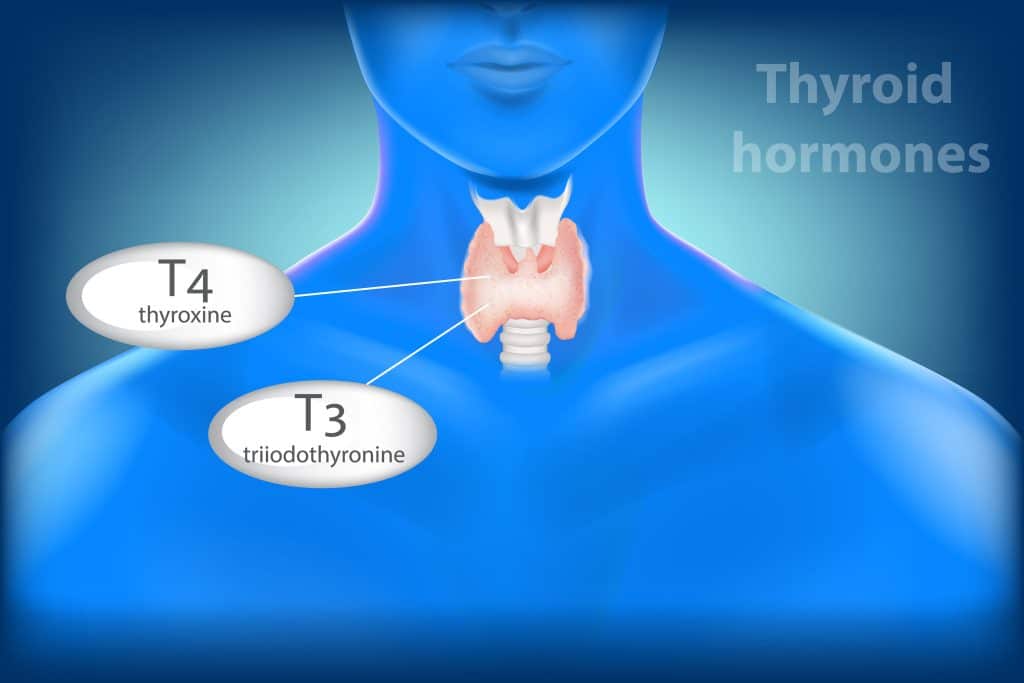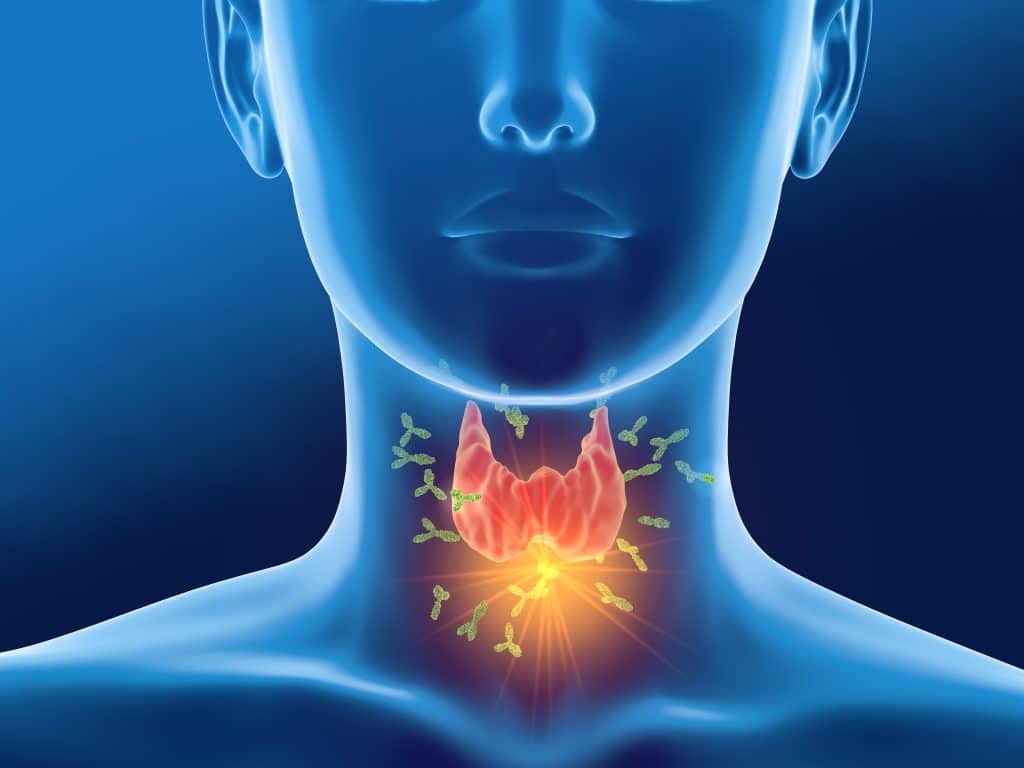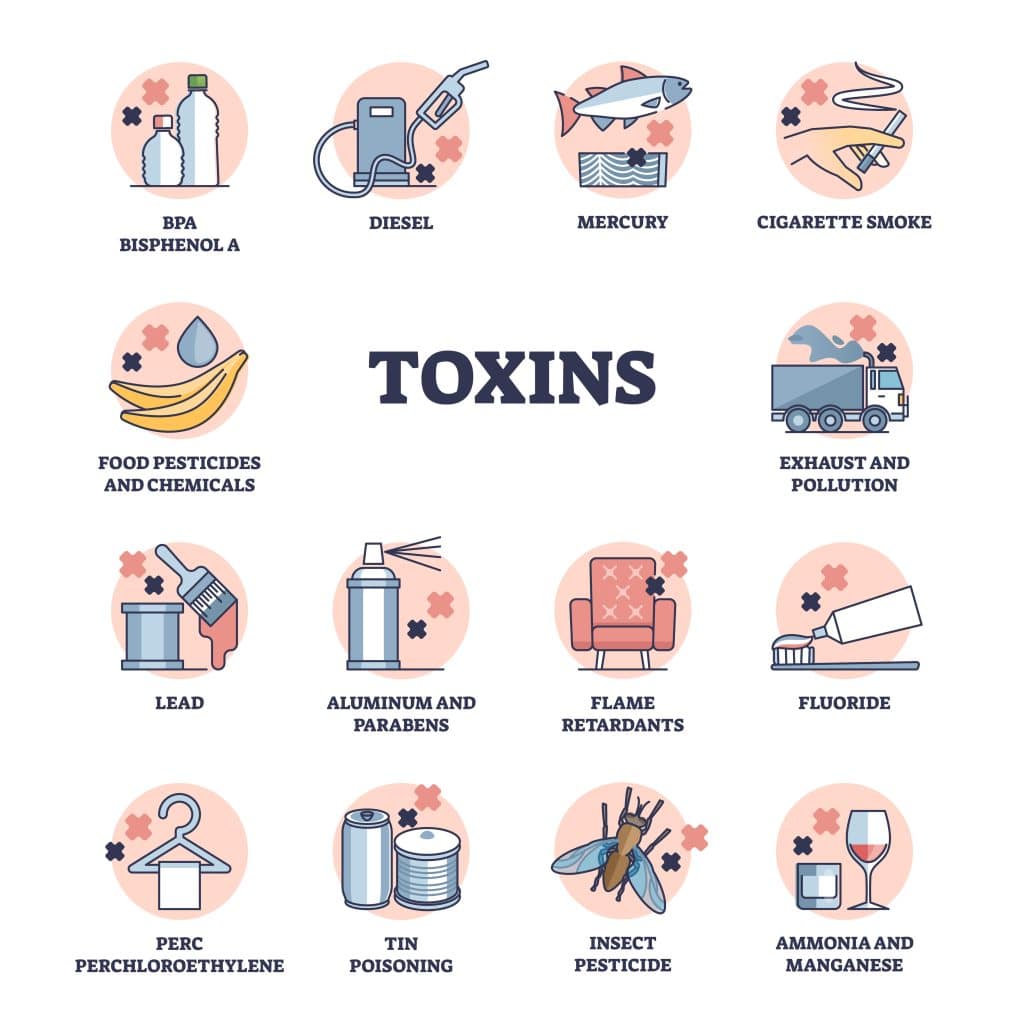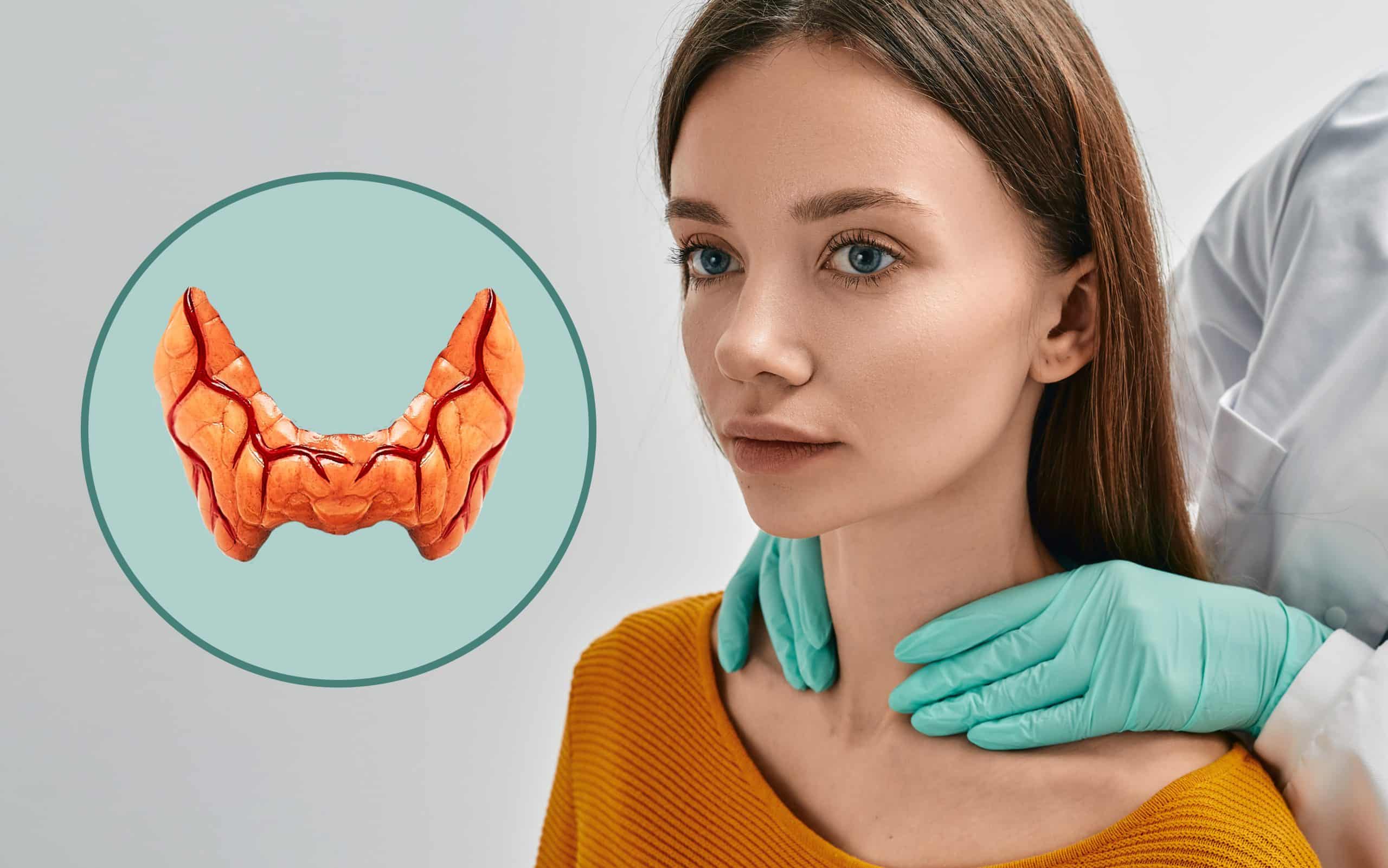What Causes Thyroid Disease – Toxins, Heavy Metals, PCBs, PBDEs, Phthalates, PFAS, Fluoride, BPA, And Perchlorates
Exactly what causes thyroid disease is complex, however, genetics and toxins both play a role. Thyroid disease is a chronic condition that affects the thyroid gland, a small butterfly-shaped organ located in the neck. The thyroid gland produces hormones that regulate metabolism, growth, and development in the body. When this gland becomes dysfunctional due to various reasons, it can result in an imbalance of these hormones, leading to a whole host of problems.
What Causes Thyroid Disease – Toxins
Toxins are harmful substances that enter our body through various sources, such as food, water, air, and skin contact. These toxins disrupt the normal functioning of the thyroid gland and lead to thyroid disease.
What Causes Thyroid Disease – Heavy Metals
Exposure to heavy metals like lead, mercury, and cadmium has been linked to hypothyroidism and goiter. These toxins can also interfere with the production of thyroid hormones and their conversion into active forms.1 2

Heavy Metals And Thyroid Function
Thyroid function is an important aspect of human health that is regulated by a complex network of hormones, enzymes, and proteins. However, there are certain environmental factors like exposure to heavy metals that can disrupt this delicate balance and lead to adverse effects on thyroid function.
One of the main routes of exposure to heavy metals is through contaminated food and drinking water. Plants absorb these metals from the soil and water, which then accumulate in the tissues of animals that consume these plants. This bioaccumulation can lead to high levels of heavy metals in the food chain, ultimately affecting human health.
When it comes to the thyroid gland, heavy metal exposure has been linked to a variety of negative effects. For example, studies have shown that exposure to lead can result in decreased thyroid hormone levels, leading to hypothyroidism. Mercury has also been found to disrupt the production of thyroid hormones and increase the risk of autoimmune thyroid diseases.3
Furthermore, heavy metal exposure during pregnancy can have serious consequences for both the mother and the developing fetus. It has been shown that maternal exposure to heavy metals can lead to impaired fetal thyroid function, resulting in developmental abnormalities in the child.4
In addition to affecting thyroid function directly, heavy metals can also disrupt the delicate balance of hormones and enzymes involved in regulating thyroid activity. For instance, exposure to cadmium has been linked to alterations in the levels of thyroid-stimulating hormone (TSH), which is responsible for stimulating the production of thyroid hormones.5
To mitigate the negative effects of heavy metal exposure, it is important to minimize our contact with these substances in our daily lives. This can include avoiding products that contain heavy metals, using protective equipment when working with these substances, and ensuring that our food and water sources are free from contamination.
Read more about heavy metals.
What Causes Thyroid Disease – PCBs
One factor that has been linked to thyroid disease is exposure to PCBs (polychlorinated biphenyls), a group of man-made chemicals that were commonly used in industrial and commercial products until they were banned in the late 1970s.
Studies have shown a correlation between exposure to PCBs and thyroid disease. PCBs are known to disrupt the endocrine system, which is responsible for regulating hormones in the body. This disruption can lead to various thyroid diseases, including both hypothyroidism and hyperthyroidism.6 7
PCBs are present in the environment and can enter our bodies through various sources. Food, air, and water are some common sources of PCB exposure. PCBs can be found in high levels in certain types of fish and dairy products due to bioaccumulation in the food chain. PCBs can be released into the air from industrial processes, waste incineration, and other sources. PCBs can contaminate water sources, especially near industrial sites or landfills.

Thyroid Disease – PBDEs
One group of environmental toxins that has been linked to thyroid disease is polybrominated diphenyl ethers (PBDEs). PBDEs are a type of flame retardant that has been widely used in consumer products since the 1970s. They can be found in furniture, electronics, and even food packaging materials.
Exposure to PBDEs has been linked to various health issues, including reproductive problems, neurodevelopmental disorders, and thyroid disease. Studies have shown that PBDEs can disrupt thyroid hormone production and function, leading to imbalances in the body.9
Thyroid Disease – Phthalates
Another chemical that causes thyroid disease are phthalates, which are commonly used as plasticizers in various products such as toys, food packaging, cosmetics, and personal care products. Phthalates are known to mimic the structure of natural hormones in our body and can interfere with their normal functions. Studies have shown that exposure to phthalates is linked to an increased risk of thyroid disease.10
Read more about autoimmune thyroid disease.
Thyroid Disease – Perfluoroalkyl And Polyfluoroalkyl Substances
Another factor that has been linked to the development of thyroid disease is exposure to perfluoroalkyl and polyfluoroalkyl substances (PFAS). PFAS are a group of man-made chemicals that have been used in various industrial and consumer products since the 1950s. They can be found in items such as non-stick cookware, food packaging, stain-resistant fabrics, and firefighting foam.
Studies have shown that exposure to PFAS may disrupt the normal functioning of the thyroid gland, leading to an increased risk of developing thyroid disease. These chemicals can also interfere with the production and regulation of thyroid hormones, potentially causing imbalances in the body.11 12
Furthermore, PFAS have been found to accumulate in the body over time and can persist for many years, even after exposure has ended. This means that individuals who were exposed to PFAS many years ago may still be at risk for developing thyroid disease.

What Causes Thyroid Disease – Fluoride
Added to water supplies and toothpaste for its supposed benefits on dental health, fluoride has been shown to interfere with thyroid function. It can block the absorption of iodine, an essential nutrient for the production of thyroid hormones.13
Read more about other toxins in tap water.
What Causes Thyroid Disease – Bisphenol A (BPA)
Used in the production of plastics and commonly found in food packaging, BPA is known as an endocrine disruptor. This means that it can mimic the action of estrogen in the body and interfere with hormone production, including thyroid hormones.14 15

What Causes Thyroid Disease – Dioxins
Dioxins are environmental pollutants that can have detrimental effects on our health. These compounds are created as a byproduct of industrial processes such as waste incineration, chemical manufacturing, and paper bleaching. They are also found in herbicides and pesticides.
Exposure to dioxins has been linked to numerous health issues, including thyroid disease. Dioxins can disrupt the production and function of thyroid hormones, leading to hypothyroidism or hyperthyroidism. This is because dioxins can interfere with the body’s ability to absorb iodine, an essential mineral for thyroid hormone production.16 17
Individuals with preexisting thyroid conditions may be more sensitive to the effects of dioxins. In addition, studies have shown that exposure to dioxins during pregnancy can have long-lasting effects on the thyroid health of the developing fetus.7
What Causes Thyroid Disease – Pesticides And Herbicides
Chemicals used in pesticides and herbicides, such as glyphosate, have been found to disrupt the endocrine system and affect thyroid function. They can also cause inflammation in the thyroid gland, leading to various thyroid disorders.18
Read more about the toxic effects of glyphosate.
What Causes Thyroid Disease – Perchlorate
Perchlorates, also known as perchlorate salts, are a group of chemicals that are widely used in industrial and military applications. They can be found in rocket propellants, explosives, fireworks, and fertilizers. Perchlorates have the ability to interfere with the functioning of the thyroid gland, leading to various thyroid disorders.
When perchlorates enter the body, they can block the uptake of iodine by the thyroid gland. Perchlorates essentially trick the thyroid gland into thinking it has enough iodine, when in reality it does not.
Over time, prolonged exposure to perchlorates can lead to hypothyroidism. In severe cases, it can also lead to goiter.19 20
Protecting Thyroid Health
To reduce your exposure to these toxins and protect your thyroid health, opt for organic produce. Choose fruits and vegetables that have been grown without the use of pesticides and herbicides. Invest in a good quality water filter to remove fluoride and other harmful chemicals from your drinking water.
Use natural household products. Avoid using harsh chemical cleaners and opt for natural alternatives like vinegar, baking soda, and lemon juice. Limit the use of plastic. Minimize your use of plastic containers and opt for glass or stainless steel instead. Also, avoid heating food or drinks in plastic containers.
What Causes Thyroid Disease – Toxins, Heavy Metals, PCBs, PBDEs, Phthalates, PFAS, Fluoride, BPA, And Perchlorates
In addition to genetics, toxins are what causes thyroid disease. Environmental toxins such as heavy metals, PCBs, PBDEs, phthalates, PFAS, fluoride, BPA, and perchlorates disrupt the normal functioning of the thyroid gland and lead to various types of thyroid diseases. By being aware of these potential toxins and taking steps to reduce exposure, you can help protect your thyroid health and reduce the risk of developing thyroid disease.
Read more about thyroid disorders.
References
1 Swarup D, Naresh R, Varshney VP, Balagangatharathilagar M, Kumar P, Nandi D, Patra RC. Changes in plasma hormones profile and liver function in cows naturally exposed to lead and cadmium around different industrial areas. Res Vet Sci. 2007 Feb;82(1):16-21. doi: 10.1016/j.rvsc.2006.05.002. Epub 2006 Jul 5. PMID: 16822533.
2 Kahn LG, Liu X, Rajovic B, Popovac D, Oberfield S, Graziano JH, Factor-Litvak P. Blood lead concentration and thyroid function during pregnancy: results from the Yugoslavia Prospective Study of Environmental Lead Exposure. Environ Health Perspect. 2014 Oct;122(10):1134-40. doi: 10.1289/ehp.1307669. Epub 2014 May 27. PMID: 24866691; PMCID: PMC4181923.
3 Hu Q, Han X, Dong G, Yan W, Wang X, Bigambo FM, Fang K, Xia Y, Chen T, Wang X. Association between mercury exposure and thyroid hormones levels: A meta-analysis. Environ Res. 2021 May;196:110928. doi: 10.1016/j.envres.2021.110928. Epub 2021 Feb 26. PMID: 33640496.
4 Sun X, Liu W, Zhang B, Shen X, Hu C, Chen X, Jin S, Jiang Y, Liu H, Cao Z, Xia W, Xu S, Li Y. Maternal Heavy Metal Exposure, Thyroid Hormones, and Birth Outcomes: A Prospective Cohort Study. J Clin Endocrinol Metab. 2019 Nov 1;104(11):5043-5052. doi: 10.1210/jc.2018-02492. PMID: 30994896.
5 Buha A, Matovic V, Antonijevic B, Bulat Z, Curcic M, Renieri EA, Tsatsakis AM, Schweitzer A, Wallace D. Overview of Cadmium Thyroid Disrupting Effects and Mechanisms. Int J Mol Sci. 2018 May 17;19(5):1501. doi: 10.3390/ijms19051501. PMID: 29772829; PMCID: PMC5983752.
6 Boas M, Feldt-Rasmussen U, Main KM. Thyroid effects of endocrine disrupting chemicals. Mol Cell Endocrinol. 2012 May 22;355(2):240-8. doi: 10.1016/j.mce.2011.09.005. Epub 2011 Sep 10. PMID: 21939731.
7 Koopman-Esseboom C, Morse DC, Weisglas-Kuperus N, Lutkeschipholt IJ, Van der Paauw CG, Tuinstra LG, Brouwer A, Sauer PJ. Effects of dioxins and polychlorinated biphenyls on thyroid hormone status of pregnant women and their infants. Pediatr Res. 1994 Oct;36(4):468-73. doi: 10.1203/00006450-199410000-00009. PMID: 7816522.
8 Alsen M, Sinclair C, Cooke P, Ziadkhanpour K, Genden E, van Gerwen M. Endocrine Disrupting Chemicals and Thyroid Cancer: An Overview. Toxics. 2021 Jan 19;9(1):14. doi: 10.3390/toxics9010014. PMID: 33477829; PMCID: PMC7832870.
9 Allen JG, Gale S, Zoeller RT, Spengler JD, Birnbaum L, McNeely E. PBDE flame retardants, thyroid disease, and menopausal status in U.S. women. Environ Health. 2016 May 24;15(1):60. doi: 10.1186/s12940-016-0141-0. PMID: 27215290; PMCID: PMC4877989.
10 Derakhshan A, Shu H, Broeren MAC, Lindh CH, Peeters RP, Kortenkamp A, Demeneix B, Bornehag CG, Korevaar TIM. Association of phthalate exposure with thyroid function during pregnancy. Environ Int. 2021 Dec;157:106795. doi: 10.1016/j.envint.2021.106795. Epub 2021 Aug 4. PMID: 34358912.
11 Berg V, Nøst TH, Hansen S, Elverland A, Veyhe AS, Jorde R, Odland JØ, Sandanger TM. Assessing the relationship between perfluoroalkyl substances, thyroid hormones and binding proteins in pregnant women; a longitudinal mixed effects approach. Environ Int. 2015 Apr;77:63-9. doi: 10.1016/j.envint.2015.01.007. Epub 2015 Jan 31. PMID: 25647630.
12 Webster GM, Venners SA, Mattman A, Martin JW. Associations between perfluoroalkyl acids (PFASs) and maternal thyroid hormones in early pregnancy: a population-based cohort study. Environ Res. 2014 Aug;133:338-47. doi: 10.1016/j.envres.2014.06.012. Epub 2014 Jul 12. PMID: 25019470.
13 Kheradpisheh Z, Mirzaei M, Mahvi AH, Mokhtari M, Azizi R, Fallahzadeh H, Ehrampoush MH. Impact of Drinking Water Fluoride on Human Thyroid Hormones: A Case- Control Study. Sci Rep. 2018 Feb 8;8(1):2674. doi: 10.1038/s41598-018-20696-4. PMID: 29422493; PMCID: PMC5805681.
14 Terrien X, Fini JB, Demeneix BA, Schramm KW, Prunet P. Generation of fluorescent zebrafish to study endocrine disruption and potential crosstalk between thyroid hormone and corticosteroids. Aquat Toxicol. 2011 Sep;105(1-2):13-20. doi: 10.1016/j.aquatox.2011.04.007. Epub 2011 May 27. PMID: 21684237.
15 Mengeling BJ, Wei Y, Dobrawa LN, Streekstra M, Louisse J, Singh V, Singh L, Lein PJ, Wulff H, Murk AJ, Furlow JD. A multi-tiered, in vivo, quantitative assay suite for environmental disruptors of thyroid hormone signaling. Aquat Toxicol. 2017 Sep;190:1-10. doi: 10.1016/j.aquatox.2017.06.019. Epub 2017 Jun 21. PMID: 28662416; PMCID: PMC5558850.
16 van Gerwen M, Vasan V, Genden E, Saul SR. Human 2,3,7,8-tetrachlorodibenzo-p-dioxin exposure and thyroid cancer risk. Toxicology. 2023 Apr;488:153474. doi: 10.1016/j.tox.2023.153474. Epub 2023 Mar 2. PMID: 36868552.
17 Endocrine Society (2023) Exposure to dioxins can worsen thyroid function, Endocrine Society. https://www.endocrine.org/news-and-advocacy/news-room/2023/endo-2023-press-han.
18 Coperchini F, Greco A, Croce L, Denegri M, Magri F, Rotondi M, Chiovato L. In vitro study of glyphosate effects on thyroid cells. Environ Pollut. 2023 Jan 15;317:120801. doi: 10.1016/j.envpol.2022.120801. Epub 2022 Nov 30. PMID: 36462676.
19 Blount BC, Pirkle JL, Osterloh JD, Valentin-Blasini L, Caldwell KL. Urinary perchlorate and thyroid hormone levels in adolescent and adult men and women living in the United States. Environ Health Perspect. 2006 Dec;114(12):1865-71. doi: 10.1289/ehp.9466. PMID: 17185277; PMCID: PMC1764147.
20 Suh M, Abraham L, Hixon JG, Proctor DM. The effects of perchlorate, nitrate, and thiocyanate on free thyroxine for potentially sensitive subpopulations of the 2001-2002 and 2007-2008 National Health and Nutrition Examination Surveys. J Expo Sci Environ Epidemiol. 2014 Nov;24(6):579-87. doi: 10.1038/jes.2013.67. Epub 2013 Oct 23. PMID: 24149973.




